Once the weather starts to warm up in spring and the first snow begins to thaw, there appear the flies — one of the most annoying insects of all. And the first thing you may think of is how to get rid of flies.
Then you ask yourself, where do they come from right after the winter’s cold? Why are house flies constantly trying to get into our homes? Why do they start biting at the end of the summer? Are they dangerous for a human?
So many questions are raised about these insects, notorious for being such a huge nuisance, that the expression “the fly in the ointment” appeared. So why are they so annoying, why do they keep pestering us and how to get rid of flies? To answer these questions, we need to learn more about them, what they prefer and how they live.
What Are Flies?
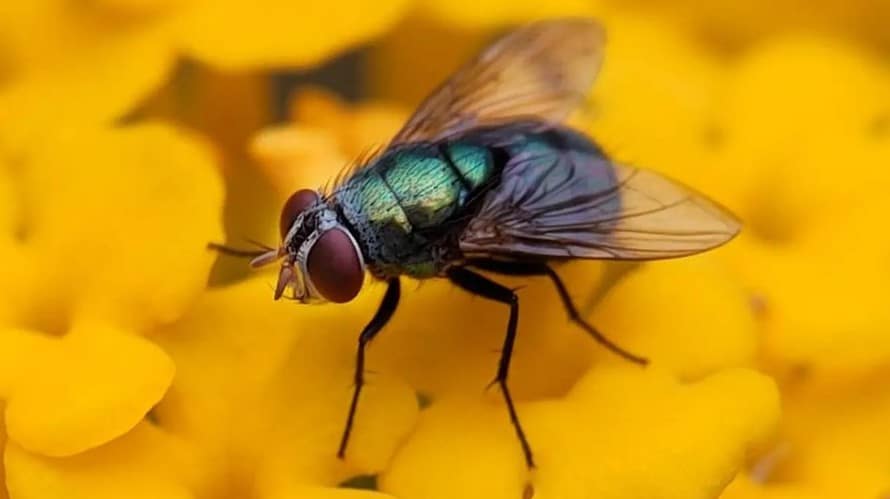
Flies are arthropods from the order Diptera. We know them, especially about the house flies, since the dawn of time, and they get their name from being the most widely spread flying insects on earth, found everywhere humans are.
How Do They Look?
House flies bodies are gray, ranging in size from 0.08 inches to an inch, and consisting of head, thorax, and abdomen. Their wings are membranous and transparent. On the end of their three pairs of jointed legs are feet equipped with sharp claws and sticky pads. This allows flies to walk and climb on any surface, including ceilings and smooth vertical walls and glass.
The most unique thing about the house flies is their eyes. They occupy most of the head and consist of several thousand hexagonal lenses (also called ommatidia) that give them 360° field of view and allow to distinguish colors.
Where Are Flies Outdoors Found?
Flies outdoors can be found across all the continents except Antarctica. The oldest known fly, which lived 145 million years ago, has been discovered in China. This discovery indicates that these insects have existed on Earth for a very long time. They prefer to settle in close proximity to humans.
Gray (or house) fly is rarely found in the wild, preferring to live next to the humans and causing house flies infestation. They feed on our foodstuffs and waste, and cause us a lot of harm instead.
House flies do not travel long distances and live no more than 300 ft away from their birthplace.
Flies outdoors love the warmth and prefer temperatures of 70°F and above, with no more than 80% humidity. When temperatures fall below this point, flies hibernate until it’s warm again. They can spend 5 to 6 months like this. That’s why once the weather starts to warm up in spring, or sometimes even during winter with the heating switched on indoors, it is possible to see living flies outdoors.
Their eggs cannot survive temperatures below 45°F, while adults perish at sub-zero temperatures.
Interesting fact: flies are only active during daytime. They can’t see at night, so they rest.
How Long Do House Flies Live?
The lifespan of a fly is very short. They can live for up to 2 months under favorable conditions and the absence of predators. However, the average lifespan of house flies is 10-20 days. These insects’ natural enemies are birds and insectivorous animals, spiders and their webs, as well as humans armed with a rolled newspaper or an electric fly swatter.
How Do Flies Breed?
House flies are ready to breed mere 2-3 days after their birth. Then, they proceed to lay about 150 eggs at a time in spoiled or leftover food, garbage, and organic waste. Over its short lifespan, a fly can lay up to 3 thousand eggs. The eggs are tiny and invisible to the naked eye, but they gestate rapidly. It takes a day for larvae to emerge. Commonly known as maggots, they will increase their size by up to 800 times in a week.
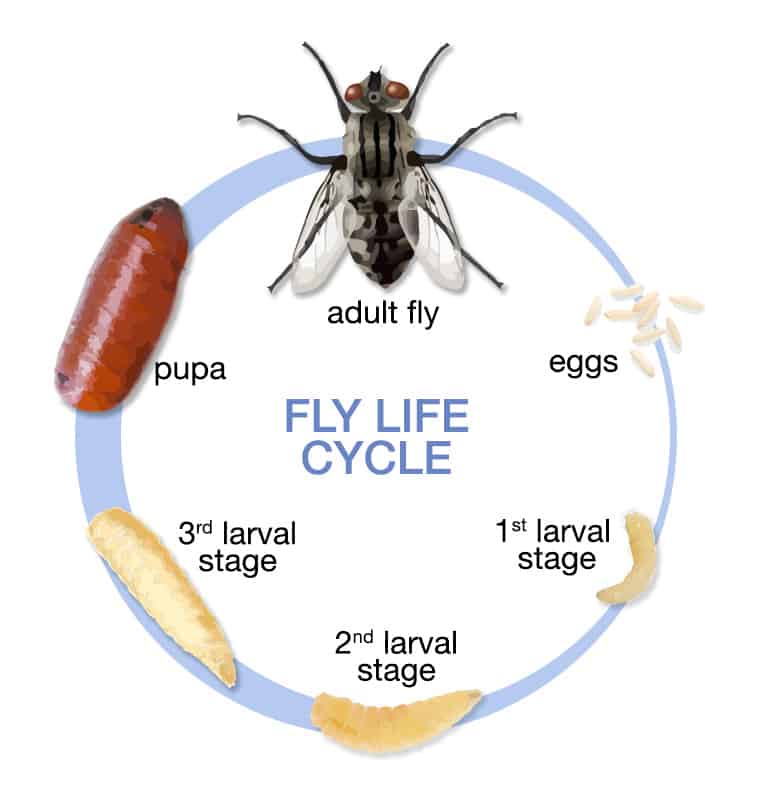
The maggot pupates and in a week transforms into an adult fly. All stages of development from egg to an adult take 12-14 days. An adult fly doesn’t grow in size throughout its short lifetime.
It crawls for the first 2-3 days of its life, waiting for its wings to grow stronger. At this point, the fly is ready to reproduce. Their reproductive capabilities are alarming because in a few days there could be an army of insects causing a house flies infestation.
What Do House Flies Eat
Flies are not the picky eaters and can feed on any organic food or waste. They prefer sweet liquid foods and can catch the smell of it over a great distance. But to eat solid food they first need to spit on it to soften the food with saliva, turning it into a liquid. Some species prefer one kind of food above all else (for example, Piophilidae, or cheese flies, breed only inside cheese).
Many people wonder why flies “rub their legs,” and what does it mean to them. The fact is, flies do this to clean sticky pads on their feet of debris and dirt. After cleaning the front legs, flies wipe their eyes and head. Then they use hind legs to clean their wings.
Specifications:
- Formulation: Powder
- Number of Pieces: 3
- Item Weight: 9.6 ounces
- Item Dimensions LxWxH: 11.73 x 9.25 x 4.13 inches
- Target Species: Fly
Species of Flies
Over 3600 species of flies exist. They differ in their appearance and habitat:
- House flies: these are the most common insects and they are causing a house flies infestation. They come from the steppes of Asia. House flies prefer to live close to humans and are found across all the continents.
- Hoverfly (syrphidae): this insect has a yellow and black striped body, similar to a wasp. It feeds on nectar and is harmless for a human. This fly got its name because it is often seen hovering at flowers.
- Blow fly has a distinct shining green body. It dwells near rotting flesh and waste and may carry bacteria and disease.
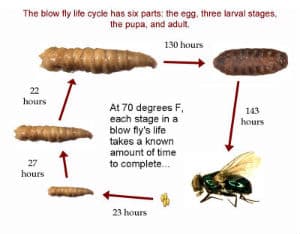
- Drone fly is a large insect (up to 0.6 in) with dense hair covering its body. Its larvae can cause intestinal diseases if ingested by humans.
- The tsetse fly is a very dangerous bloodsucking fly. It carries diseases that destroy immune and nervous systems and lead to death. These flies exist only in Africa.
- Stable fly bears a close resemblance to a house fly. They migrate en masse from woodlands closer to cities, towns, and villages by the end of the summer and have a very painful bite. Many people think that these are regular house flies that began to bite. But that’s not true: Stable fly is a separate fly subspecies.
- Dung fly lays its eggs in animal dung only. It’s rarely seen inside a human home.
- Fruit flies are much smaller insects that are attracted to rotten fruits and other sweet and smelly leftovers. If they are common guests in your kitchen, make sure to use specific fruit fly traps and insecticides.
- Cluster flies are mostly seen in the grass where they lay eggs in the earthworm burrows.
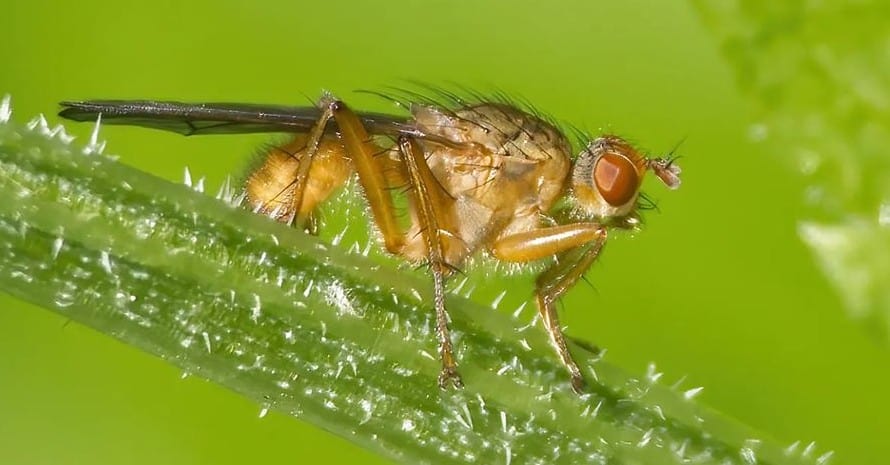
Drone fly
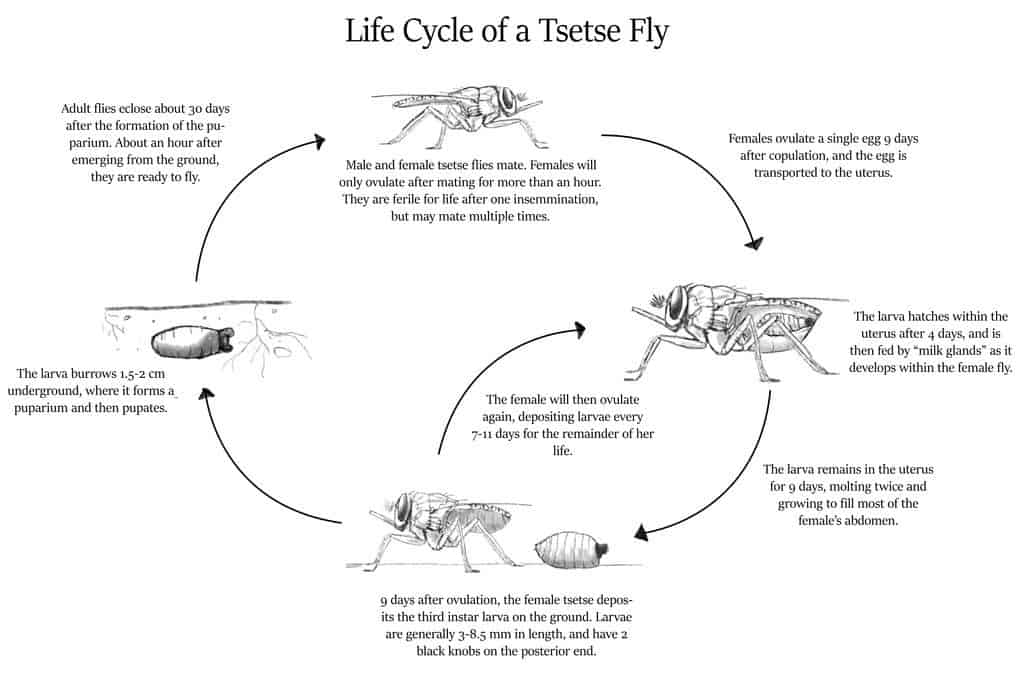
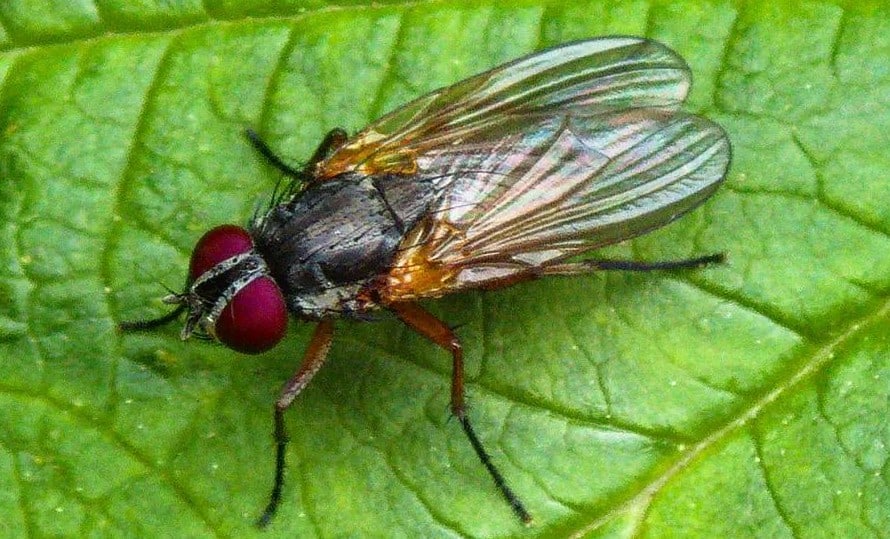 Dung fly
Dung flyThe most familiar kinds of flies to us are various subspecies of a house fly. Other kinds are far less common.
Are Flies Dangerous to Us?
Flies are not dangerous to humans directly: they don’t bite and cause no allergic reactions. However, their behavior and habits cause a lot of trouble:
- Flies can cause the most harm as carriers of disease-causing bacteria and infections. Their persistence in getting inside a house, searching for food and crawling all over it causes them to spread infections rapidly.
- Larvae can infest any living organism — human or animal.
- Crawling through filth and manure piles, flies outdoors pick up a variety of microorganisms, bacteria, and worms eggs with their legs. Flying from a garbage dump to your home, flies spread all of the above on your food, which may cause such diseases as cholera, dysentery, tuberculosis, and anthrax. That food becomes dangerous to eat.
- In addition to spreading disease, house flies are simply annoying with their constant flying around and buzzing.
The only use they have is serving as food for birds and small animals.
How To Get Rid of Flies
There are a lot of ways to get rid of house flies. The simplest, manual methods are a fly swatter or a rolled newspaper with the help of which you can kill flies. A big con of this method is the dirty stains on the walls.
Another drawback is that house flies detect movement much faster and manage to fly away, so you’ll have to “hunt” or a long time to kill flies. You shouldn’t pick killed house flies by hand, but use a scoop with a broom or gloves instead.
Adhesive tape
House flies are attracted by the tape’s pleasant smell and get stuck when they land upon it. The device is easy to use letting you easily to get rid of house flies. You just need to unroll it and hang this natural fly killer in a convenient place.
The tape is the cheapest way to get rid of house flies, and you can hang several at once. Probably, it is the most popular of home remedies for flies.
Specifications:
- Material: Plastic
- Number of Pieces: 6
- Item Weight: 1.4 pounds
- Item Dimensions LxWxH: 10.88 x 3.31 x 17.63 inches
- Target Species: Flying Insects
Pros: They just work. Cons: The unaesthetic appearance of a room with hanging ribbons with house flies.
Newly developed traps to kill flies are more original, convenient, and aesthetically pleasing. Swiss company Swissinno produces window traps to kill flies that are attached to the corner of the window, fit well into room interior, and catch insects reliably.
These traps to get rid of flies look like a triangular box with holes in it. House flies respond to the bait, enter the trap and get stuck. And you are getting rid of flies without a trouble.
Specifications:
- Material: Plastic
- Number of Pieces: 25
- Item Weight: 0.19 Pounds
- Item Dimensions LxWxH: 5.2 x 3.3 x 0.1 inches
- Target Species: Fly, Mosquito, White Fly, Gnat
Trappify is a sticky fly trap that will serve you best if your number one source of fly attraction is home plants. It has no pesticides or other toxic substances and can deal with flies solely by gluing them. If you insert the bottom of Trappify into the soil by the plant or let it hang in its branches or even above it, the insects would appreciate its yellow color and confuse it with flowers.
Eventually, none of the flies or fungus gnats will get to your plant because every one of them will be glued to this bright, attractive butterfly. Trappify traps are designed for indoor usage, but they act pretty much like sticky garden traps. If the flies are gathering around your plants and don’t fly to other areas of your house, this trap would be a perfect choice. However, you may need to add some soil treatment, as it gets infested with gnats in the most severe cases.
Traps of this kind are odorless and completely safe. If you accidentally touched glue on the trap surface just rub the glue with vegetable oil and wash it thoroughly. The trap effect lasts for three months, but it may end sooner if there are too many flies glued to it.
| Pros: | Cons: |
|
|
Repellent plugs
A fairly widespread device to kill flies that uses insecticide tablets or liquid. When heated, the insecticide spreads over the room and destroys the house flies infestation.
This device is effective in your attempts to get rid of house flies but must be used according to the instructions: do not plug it in inside children’s rooms or less than a meter away from people. The process of getting rid of flies, however, has to be safe to your family.
There are a variety of brands on the market that help people get rid of flies: Raid, Aroxol, Jungle Formula.
The more advanced version of the device to kill flies is a fumigation fogger, one of a kind of the house fly spray. This device automatically releases small amounts of steam at regular intervals. The insecticide gets into all hard-to-reach places helping you to get rid of house flies.
Pros: rapid effect (after 2 hours) in getting rid of flies; destroys even the larvae; reusable.
Cons: to get rid of house flies with the help of a fumigation fogger you have to leave the house for 2-3 hours, pack and remove food, children’s toys, and other things.
Aerosol house fly spray
The most widespread insecticide to kill flies that includes such poisonous substances as permethrin and tetramethrin. It’s a house fly spray pulverized in house flies from a can under high pressure.
Cons: when using an insecticide house fly spray, people and animals need to leave the apartment and return only after its full ventilation.
There are a wide variety of house fly spray brands on the market, such as Raid, Terro, Bedlam, Phantom II, etc.
Pulverization of the house fly spray should be done from the far corner of the room in the direction of the exit. Inside an area of 200 ft², the house fly spray should be airsprayed for 5 seconds, and inside an area of 250-350 ft² for 10-12 seconds.
Specifications:
- Item Form: Aerosol
- Number of Pieces: 2
- Item Weight: 3.21 pounds
- Item Dimensions LxWxH: 12.87 x 7.95 x 2.72 inches
- Target Species: Asian Lady Beetles, Boxelder Bugs, Flies, Fruit Flies, Hornets, Mosquitoes, Non-biting Gnats, Small Flying Moths, Wasps, Yellow Jackets
Raid Flying Insect Killer has a formula developed especially for flies and mosquitoes, but it’s also suitable for wasps, hornets and Asian lady beetles. It contains d-Phenothrin and Prallethrin, the ingredients that cause the most damage to flying pests. You can spray it straight on the insects or into the air in the room where they fly. It’s better to keep the spray about three feet from walls and furniture.
When the room is misted, leave it for a couple of hours and take every other inhabitant with you, human or animal. Before re-entering the room, don’t forget to ventilate it thoroughly.
The spray can also be used outdoors. Try to disperse it when the weather is calm and keep the bottle away from your face and body when pressing the button. You would need to spray as much as indoors, maybe, even more, to keep the pesticide cloud in place.
There’s no unpleasant odor whatsoever, as Raid Flying Insect Killer is enriched with a pleasant Odor Fresh Scent, designed exclusively for Raid products. Raid Spray deals with large amounts of flying insects in a couple of hours, but it wouldn’t prevent them from coming to your house again. Producers advise completing the Killer Spray result with Raid Max Bug Barrier. This other product will keep the flying pests away from your house for several months.
| Pros: | Cons: |
|
|
Granules and Liquid Insecticides
The perfect solution to get rid of house flies for those times when you can’t use a house fly spray. Dry pellets to kill flies are laid out in the corners of the rooms. The poison paralyzes house flies immediately on contact.
Cons: pets can find granules killing flies; high price
The most common brands are Maxforce and Zyrox, which are sold in 4.5 lb buckets. The granules to kill flies include methomyl, cystricosene, and bitrex.
No products found.
Specifications:
- Active Ingredients: Imidacloprid 10%, cis-9-Tricosene 0.1%
- Yield: 1 envelope (2 oz.) makes 1 pint of finished solution
- Item Weight: 1.12 pounds
- Item Dimensions LxWxH: 2.45 x 3.8 x 8.45 inches
- Target Species: Common house fly or lesser house fly (Does Not Work on other types of Flies)
Maxforce Fly Spot will cost you more than any regular means of dealing with flies and can be used when nothing else is of help. It’s the closest substance to the ones used by professional exterminators you can easily spray in your home. Just make a water solution and spray it everywhere you come across the pests, outdoors and indoors alike. It contains two strong fly attractants: one providing a sugar base and the other one a pheromone.
The active ingredient is Imidacloprid that kills even the most resistant insects in 60 seconds. Make a water solution in your pump spray and apply around the perimeter of your house, indoors and outdoors alike. Avoid contact with food. Flies will be attracted to the sprayed areas very soon, and the substance will keep its qualities as bait for up to six weeks.
Another way of applying Maxforce Fly Spot is to place small containers with its water solution all over your house or yard. The 16 OZ bottle costs around $70 on online stores, but it will last very long. If you have doubts whether to buy it, the 2 OZ envelopes are also available for purchase.
| Pros: | Cons: |
|
|
Agita powders
The active substance thiamethoxam which is killing flies is dissolved in warm water according to instructions and mixed thoroughly. Use a brush to apply the prepared solution to kill flies to surfaces where house flies most often congregate. It may be applied to window sills, doors, and balcony. The substance killing flies retains its effectiveness for 6 to 8 weeks.
Cons: this mean to kill flies cannot be used in children’s rooms; surfaces treated with the killing flies solution shouldn’t be wiped or cleaned; gloves must be used when applying the solution.
UV fly traps
An electrical device to kill flies that emits UV lights of a specific wavelength. These lights attract house flies, who are then electrocuted on contact with the electrified grid. This killing flies device comes with a special tray used to collect the electrocuted flies’ bodies, which can be easily cleaned 1-2 times a week.
This type of home remedies for flies is available in different sizes and capacities, with single or multiple bulbs, which determine the device’s effective range in killing flies. UV killing flies traps are silent, hygienic, and safe. To prevent anyone from accidentally touching the electrified grid it is enclosed by a protective grating. This device helping you to get rid of flies is aesthetically pleasing, available in a variety of colors, and can be mounted on walls, from ceilings, or placed on the floor.
Specifications:
- Material: Metal
- Color: White
- Item Weight: 4.2 Pounds
- Item Dimensions LxWxH: 3 x 10.5 x 15 inches
- Target Species: Flying Insects
Many manufacturers produce devices to get rid of flies or to kill flies of different capacities for indoor and outdoor use. The most affordable and quality brands of UV home remedies for flies are RockBirds for small rooms, as well as DynaTrap and Swissinno.
Pros: safety; child and pet proof; aesthetically pleasing; a wide range of configurations with different capacity; effective in getting rid of flies even outdoors; a great range of prices.
Cons: doesn’t succeed in killing flies larvae.
No products found.
Although being pretty small in size, this fly zapper can protect the area of up to 625 square feet. It has a UV LED lamp that attracts all kinds of flying bugs and kills them on contact. It doesn’t pose any danger to humans and animals as it has the protective grid. You can open it up and remove the tray to clean it with a special brush provided with the zapper. The lamps can be re-installed this way too.
BLACK+DECKER Bug Zapper is effective for protecting indoor spaces, such as kitchens, living rooms, and bedrooms (it will also make a nice blue night light). It is also an excellent choice for public spaces, such as cafes, hospitals, and offices. To turn it on, plug it into a power socket and push the black button on its right. It takes less than an hour for the zapper to attract its first visitors, and in a day you will most likely find very few flies around you.
The materials this zapper is made from high-quality, eco-friendly materials that are also very durable. Its small size makes it very mobile, and you can take it with you even when traveling.
| Pros: | Cons: |
|
|
CO² insect traps
An efficient and unique device to kill flies with an effective range of up to 0.5 acres. It is designed to be placed somewhere outside, like in your yard or garden. This natural fly killer emits carbon dioxide, moisture, and heat to attract house flies. When insects have been lured in, a fan sucks them into a net, where they die within 24 hours.
An efficient and unique device to kill flies with an effective range of up to 0.5 acres. It is designed to be placed somewhere outside, like in your yard or garden. This natural fly killer emits carbon dioxide, moisture, and heat to attract house flies. When insects have been lured in, a fan sucks them into a net, where they die within 24 hours.
These killing flies traps drastically reduce the number of insects on your property.
A device to kill flies with an effective range of 0.5 acres will cost you around 80$ and weight about 4.5 pounds (Dynatrap Insect Trap DT1000). But a larger area of about 1 acre will require a more powerful trap to get rid of flies, which weighs 25 pounds and costs over 300$ (Mosquito Magnet Patriot, made in the US).
Pros: effective on getting rid of flies on a large area, like a yard or a garden.
Cons: doesn’t succeed in killing flies; high price.
When choosing insecticides to get rid of flies, you should pick killing flies chemicals containing permethrin and tetramethrin, and avoid those containing chemical elements that are toxic and dangerous to humans and pets, like phosphorus and chlorine.
To get rid of flies in nearby areas, compost pits or cesspools, you should call pest control specialists. They use a technique called fogging to cover the area with fog containing potent insecticides to kill flies. It gets into all nooks and crannies and kills not only flies but also larvae, ticks, and bugs.
When choosing a means to get rid of flies, consider the following:
- the size of your house or yard;
- how many flies are there (a few house flies getting into your room is not a reason to buy an expensive device to get rid of flies but for businesses dealing with food such devices killing flies are indispensable);
- are there children or pets in the house (do not use strong insecticides to kill flies if there are any);
- how much are you willing to pay for devices and chemicals to get rid of house flies;
Only after taking all of this into consideration can you purchase the right tool for getting rid of flies.
Preventive Measures
It is always easier to prevent a problem rather than try to get rid of flies afterward – you should keep this in mind and try to prevent pesky insects from entering your home.
House flies do not infest places with unfavorable conditions for them. That’s why you should remember that these insects like and deny them of the opportunity to eat and reproduce at their leisure.
To prevent the house flies infestation, ruining your food and spreading infections, you should limit their access by any means necessary:
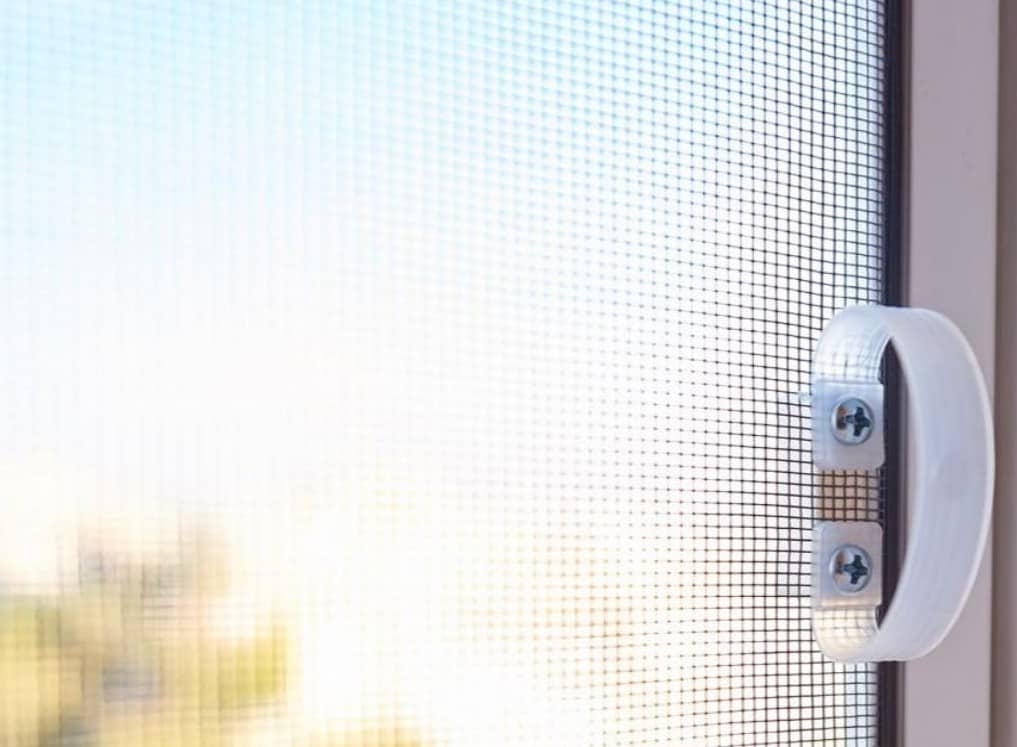
- Install mosquito nets on windows.
- Do not leave food, crumbs, fruit out in the open and accessible for insects. Timely remove the food from the table or cover it with lids, napkins, or gauze.
- Keep garbage bin clean and its lid closed.
- Keep the kitchen clean and tidy, timely wash dishes.
- If you have a dumpster outside, keep it closed and clean.
- Treat cesspits with chlorine at least once a month.
- Use insect traps and adhesive tapes to get rid of house flies.
- Use fly repellents and insecticides in case of large insect concentrations.
Remember that a single fly can quickly produce up to 3 thousands more. Then, before you even know it, there will be swarms of flies all around the house, spreading infections and diseases.
The house flies infestation should be dealt with by any appropriate means. Preventive measures in the process of getting rid of flies should be taken in conjunction: cleaning up, keeping your house clean and tidy, and repelling and killing flies.
References:
- Musca domestica Linnaeus (University of Florida):
http://entnemdept.ufl.edu/creatures/urban/flies/house_fly.htm - Houseflies(Division of Control of Tropical Diseases, World Health Organization):
https://www.who.int/water_sanitation_health/resources/vector302to323.pdf - The House Fly and Other Filth Flies (Illinois Department of Public Health):
http://www.idph.state.il.us/envhealth/pcfilthflies.htm
Contents
Why You Should Trust Pest Control Hacks?
We know that pests are nasty neighbors, and it can take months to eliminate them without the right approach. Our experts use their own experience to compile articles and guides that are introductory and informative. Our authors’ opinions are independent and based on the results of practical testing of pest control tools. We do not notify manufacturers of testing of their products and do not receive payment from them for posting their items. Also, our texts are never submitted to company representatives for proofreading before placement. On the site, you will find exclusively objective ratings and reviews.

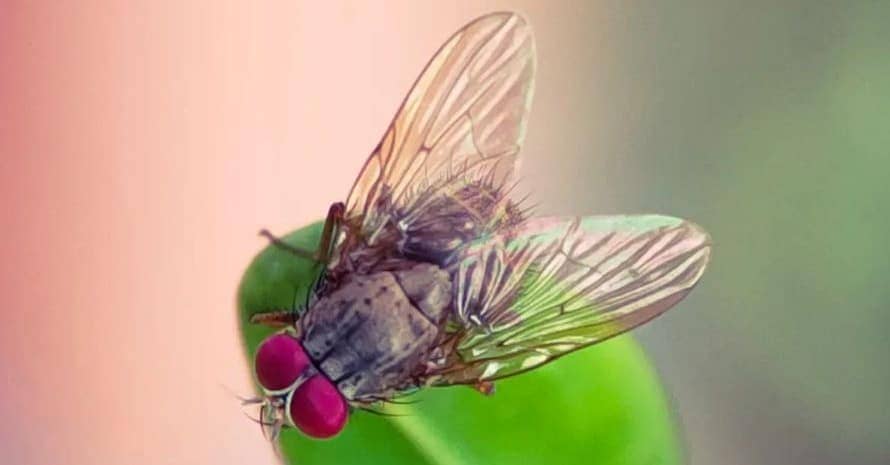


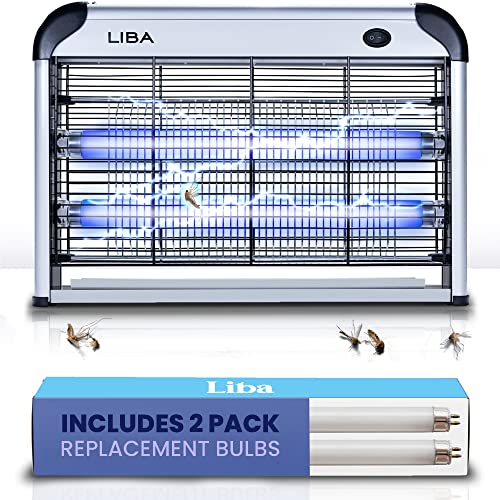
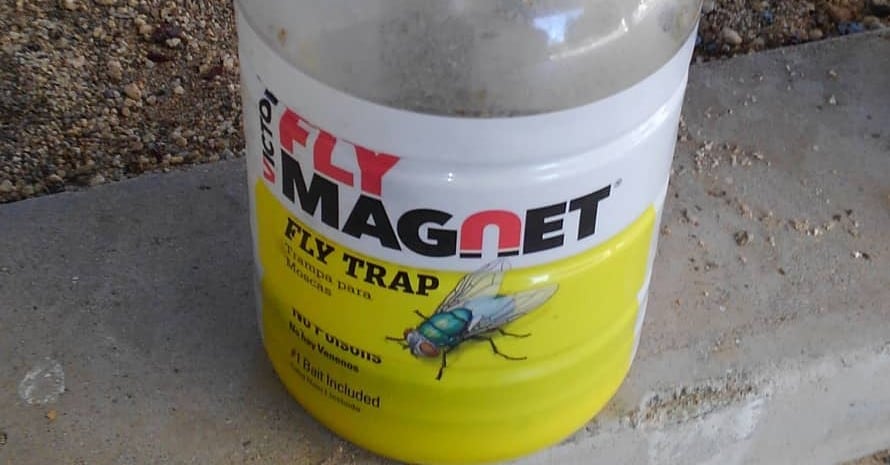

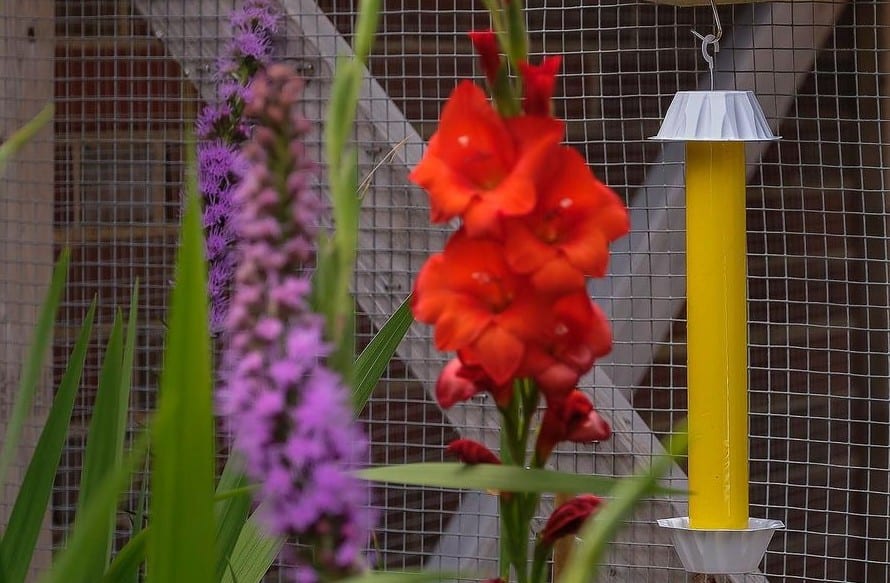

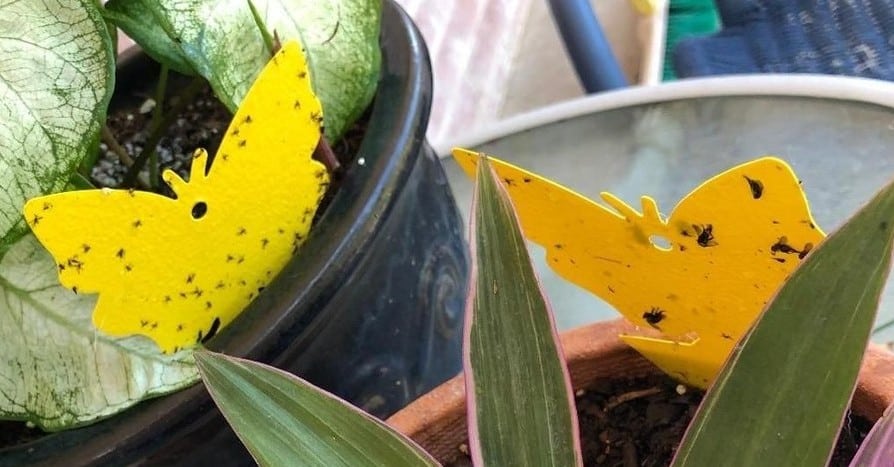
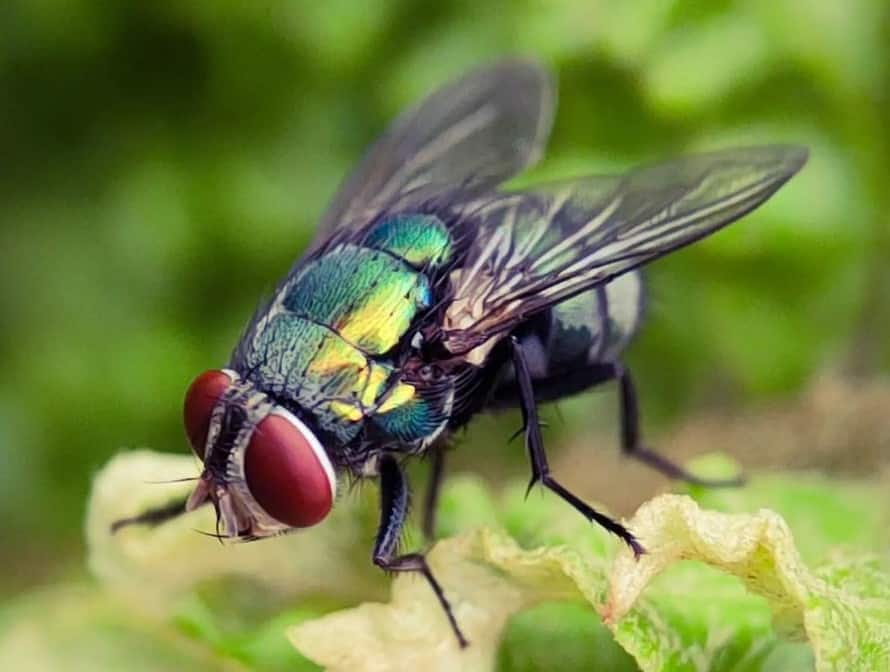

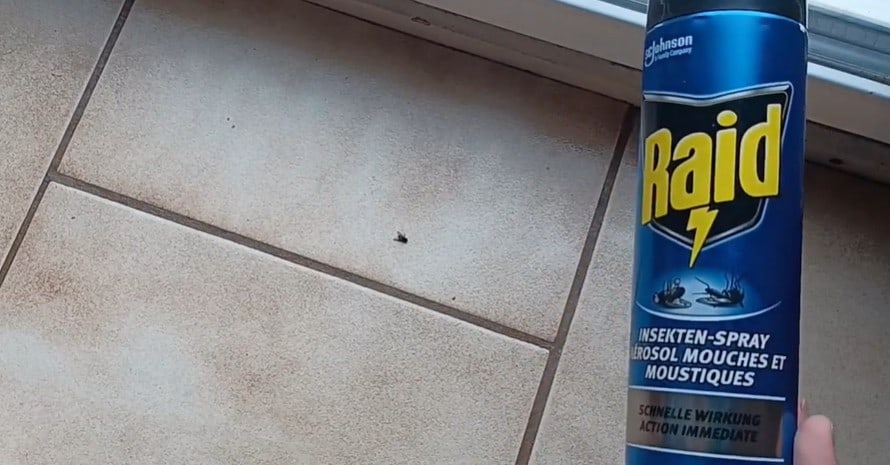
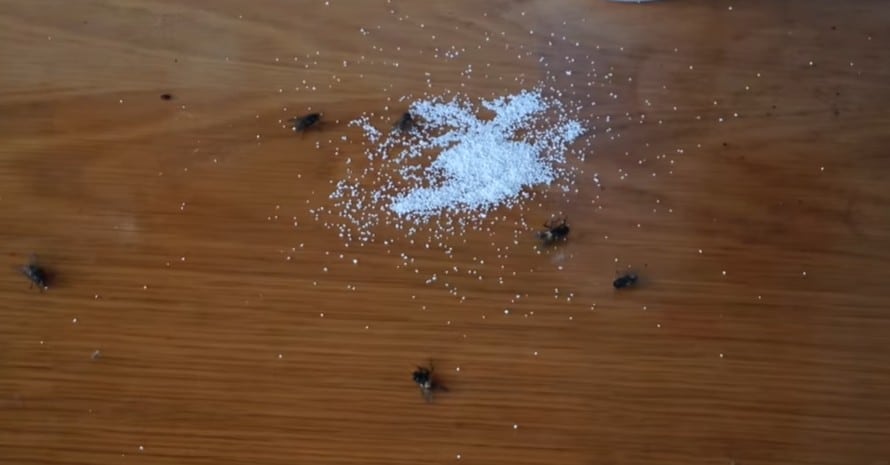
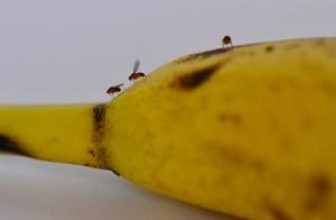
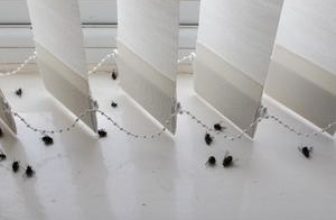
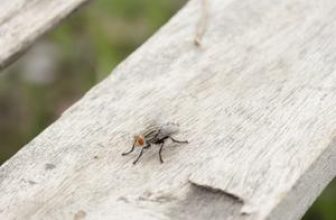
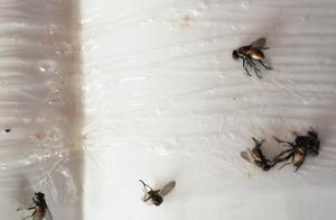


As soon as I found this web site I went on reddit to share some of the love with them.
It’s hard to find knowledgeable people on this topic, however, you
sound like you know what you’re talking about!
Thanks
Lengthy article but sounds to read! But i am not sure all the flies can be caught in the same way! Thanks for sharing!
The best article on killing flies I have found, very complete and the information is very valuable. Thank you very much for sharing your knowledge.
Only wanna tell that this is extremely helpful, Thanks for taking your time to write this.
You’re welcome
What about diatomaceous earth? That’s an organic way to get rid of them.
Yeah, you can use it too.
Thanks, PeaceGirl!
Each made me forget that there is life somewhere without constant buzzing. My favorite season was ruined, since all I was doing was trying to get rid of flies indoors. And your advice helped! Well, actually Victor M380 Fly Magnet was the one that helped me and my family, but without you, I would have never found the trap. It’s safe to call it a family friendly remedy.
Thank you, Nicholas, for such an informative article! Speaking about my experience: every summer I a problem of insects bothered our family. I was searching for a way of getting rid of flies indoors without harm to health. Many different remedies have been tested, and ZAP IT! turned out to be really useful. A handy and productive thing!